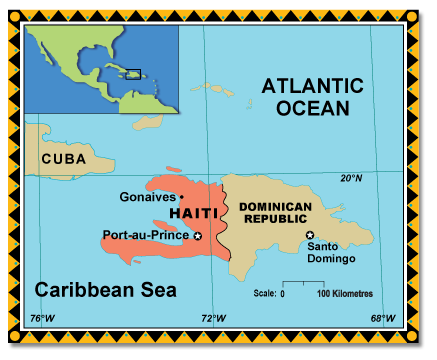

Haiti was mainly influenced by the French, while the Dominican Republic was mainly influenced by the Spanish. Haiti experienced a huge influx of Africans, who were imported by the French for slave labour. They worked on sugar cane and other plantations. In contrast, Spain had economic interests elsewhere and, for the most part, left the settlers to run the colony, which was called Santo Domingo at the time. As a result, the Dominican Republic has a stronger history of independence than Haiti. |
|
|
| Throughout Hispaniola’s history, there has been conflict between the two countries. The border has shifted at different times; generally two-thirds of the island belongs to one country and one-third to the other, but which country has the larger portion has changed. |